One morning last week, a break in rain showers was the perfect motivation to take a sunrise bike ride to Notre Dame cathedral. It feels like such a treat to make yourself a thermos of coffee, put on a podcast or the news, and hop on your bike — and then wake up with the speed and the wind, as you cycle along to a beautiful spot to watch light and colors return to the day. (Listening to music or the news while I bike is a bad habit I’ve been trying to kick for years, but in Germany, at least, it is legal to listen to something in one ear, with the other attuned to traffic … so that's my justification.)
As I got to Notre Dame the sun was just rising, and the Seine was peaceful and still, yielding lovely reflections. After a horrible fire in 2019, the cathedral is set to re-open in December 2024, for Christmas. As you can see, the restorations are in full swing. The original restoration plan was to re-open in time for the summer 2024 Paris Games, which won’t happen, but it still seems remarkably quick to finish the whole restoration work in just over five years.
Later in the week I saw Notre Dame from a different angle — from the terrace of the Théâtre du Châtelet, where I had the opportunity to watch a friend perform with her ballet company, the Opéra national du Rhin in the Alsace, an eastern region of France near the border with Germany. The piece was a ballet re-interpretation of the film Wings of Desire (Der Himmel über Berlin in German), and it was remarkable! The director, Bruno Bouché, wrote that, as a company at the border between France and Germany, he wished that this piece, which he choreographed, would explore such liminal spaces — translating film to dance, and re-interpetring a German film as a French company — and show how we are stronger together.
It was opening night, and my friend let me tag along for the cocktail on the theater’s rooftop terrace with this stunning view across many Parisian bridges and Notre Dame. At the reception, I had to pinch myself when seeing people from Paris Opéra ballet in person, such as the former director of company, Brigitte Lefèvre, and the director of the school, Élisabeth Platel, who I’ve otherwise seen on YouTube many, many times.
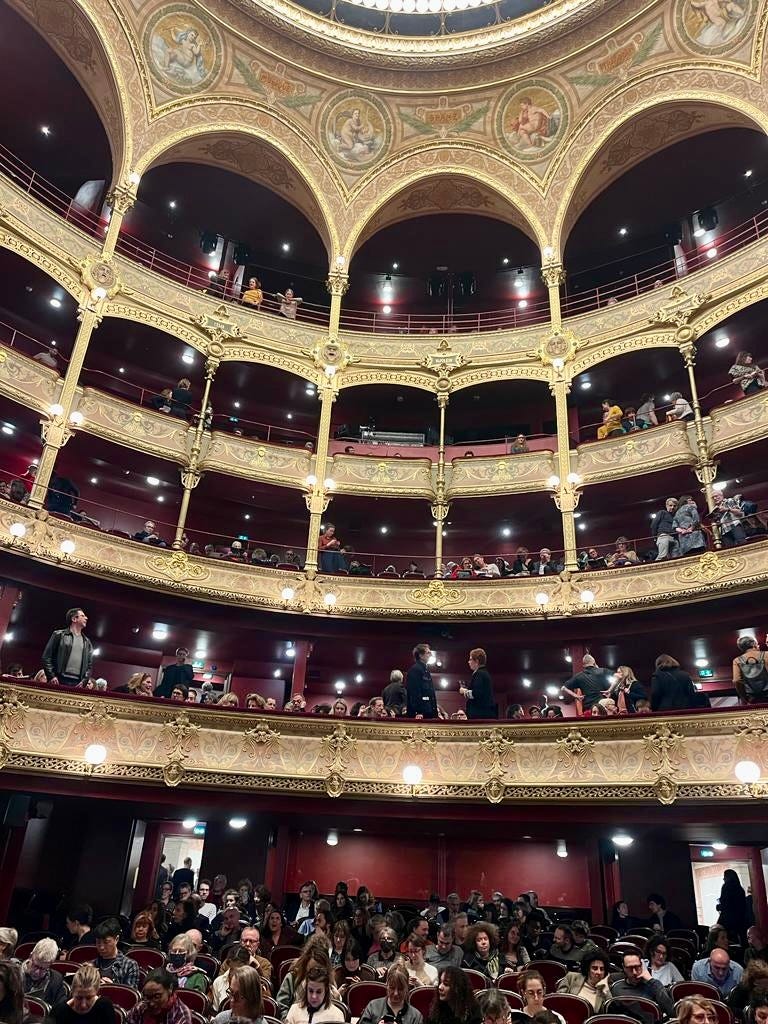
The other days the weather went: sun, rain, sun, rain, hail, wind, sun, on rapid repeat. It led to some lovely rainbows, including this somewhat unattractive shot seen through a dirty window at work. In French there is an expression les giboulées de mars, which has its English equivalent in April showers, and indeed these last weeks have been filled with always unexpected, usually gusty, and sometimes hailing showers.
Around town one could, however, also admire the fruits of these March/April shower labors, like these gorgeous flowers, and trees that somehow opened their leaves within what seemed like two days:
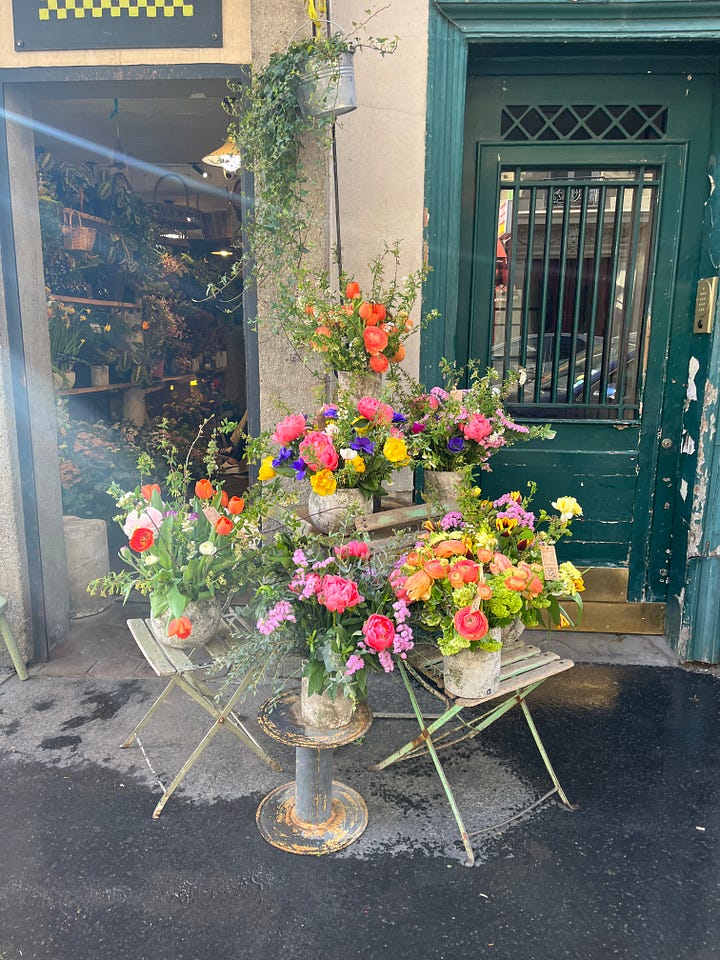
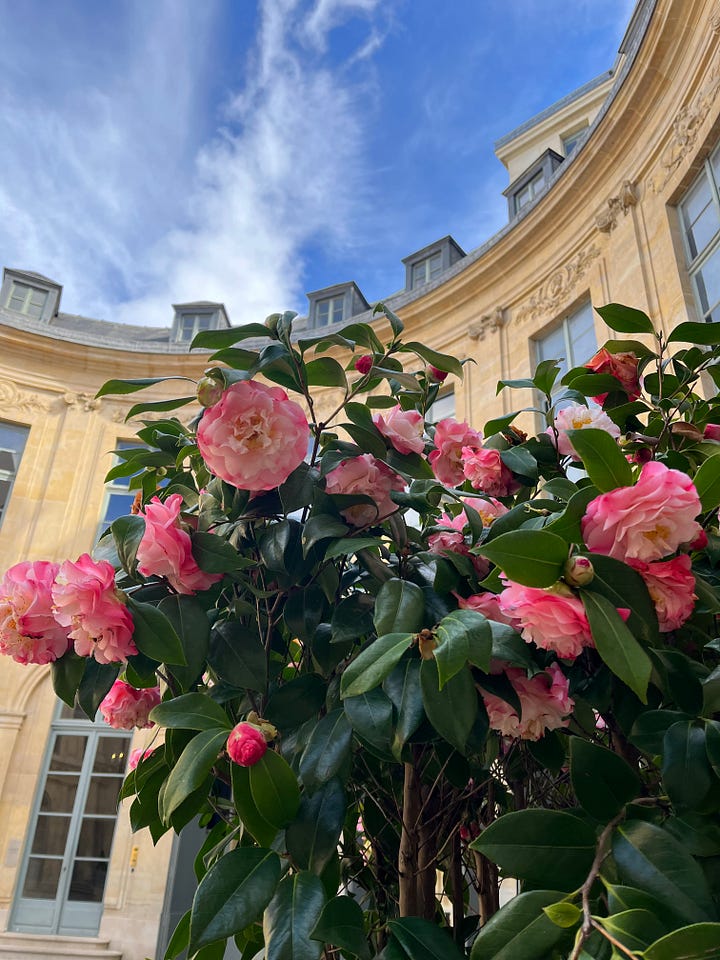
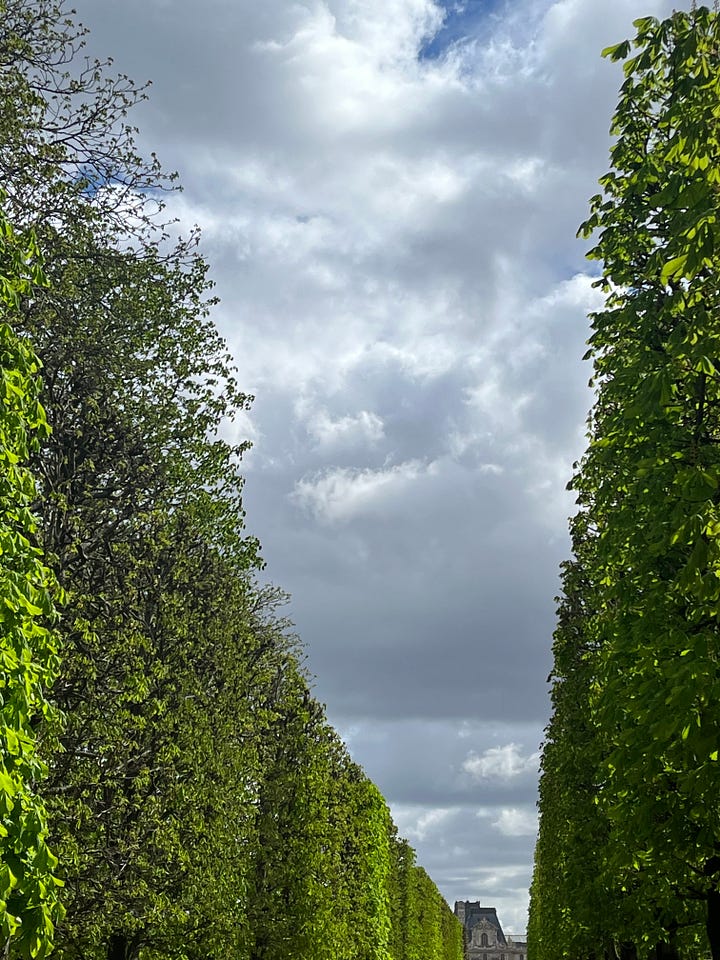
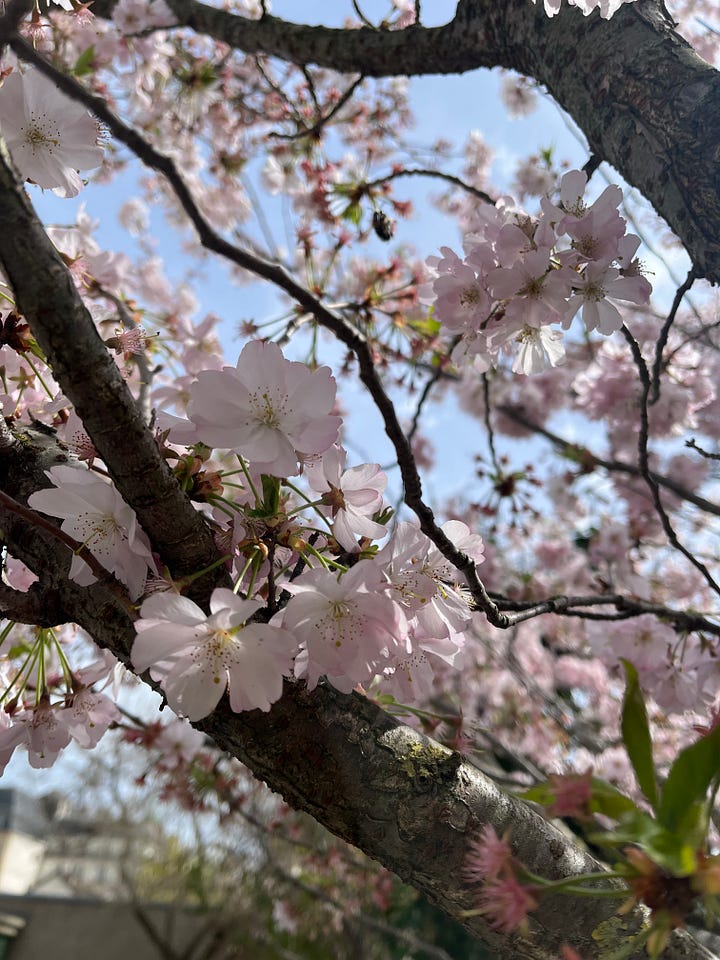
On Friday evening after work, two friends and I attended a piano concert by David Fray, a French classical pianist, best known for his interpretations of Schubert and Liszt, as well as Bach (e.g., his Goldberg Variations). For this concert at the Théâtre des Champs-Elysées, he played Schubert and Liszt, and almost the most moving, I thought, was a 2-minute encore where he played Schubert’s Impromptu No. 3 in G-Flat Major, with a recording here.
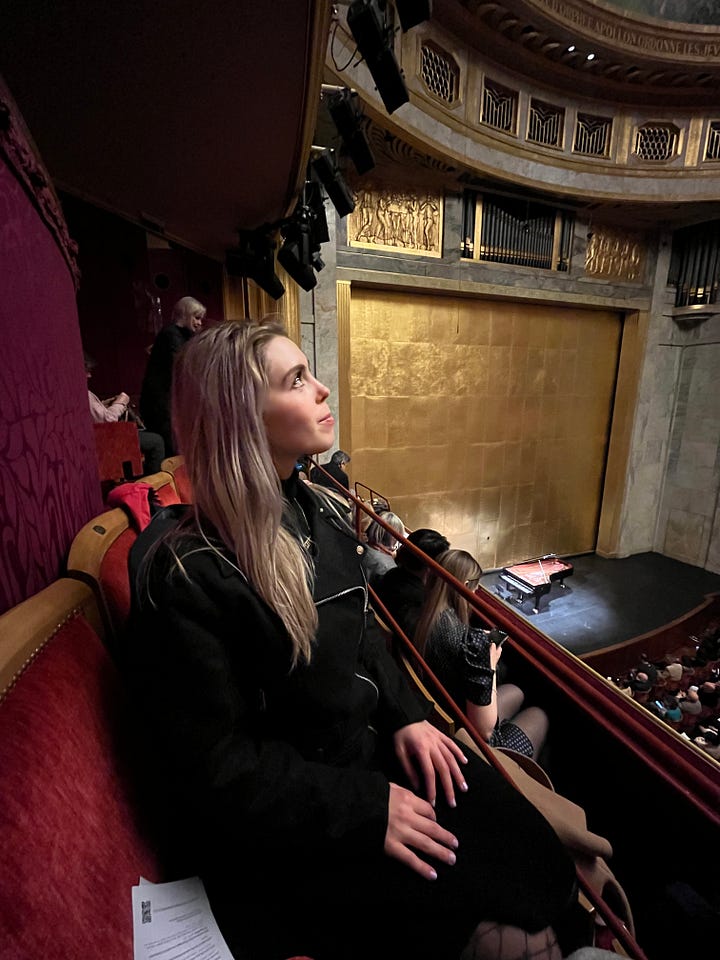
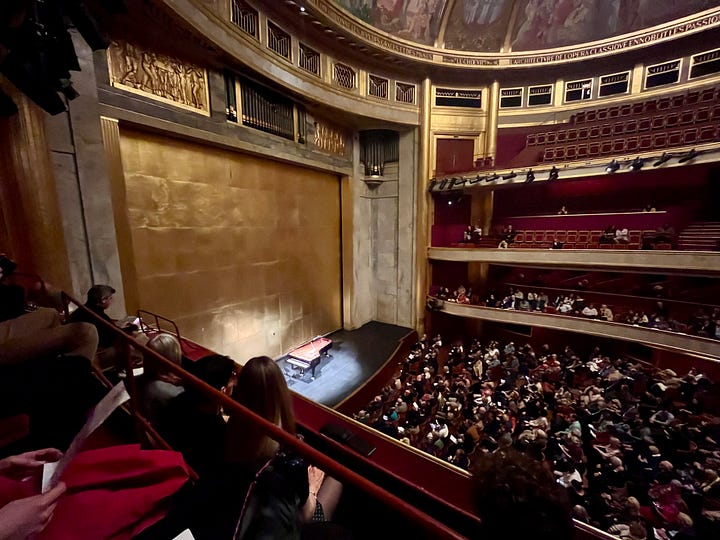
On Saturday a friend visiting from Dublin and I played a guessing game of name these flowers, which we were admiring. Can you tell? Hint: look at the stems. In the end, as two flower novices, we ended up consulting Plantnet app to find the answer…
The previous weekend, a friend visiting from Newcastle and I were wandering around Montmartre, in search of coffee and some cardio with the hills, and couldn’t help from taking a photo of the often photographed ‘sinking house’ (below), and then have a delicious Lebanese ice cream at Bachir, which might have been the best thing I ate in the past week or two. We chose a sorbet version, half apricot, half lemon, and rolled in toasted pistachios, though the classic, milk flavors, such as halva and pistachio, also sounded so enticing — and then enjoyed on the slope of the Montmartre park, soaking up the first rays of spring sunshine.
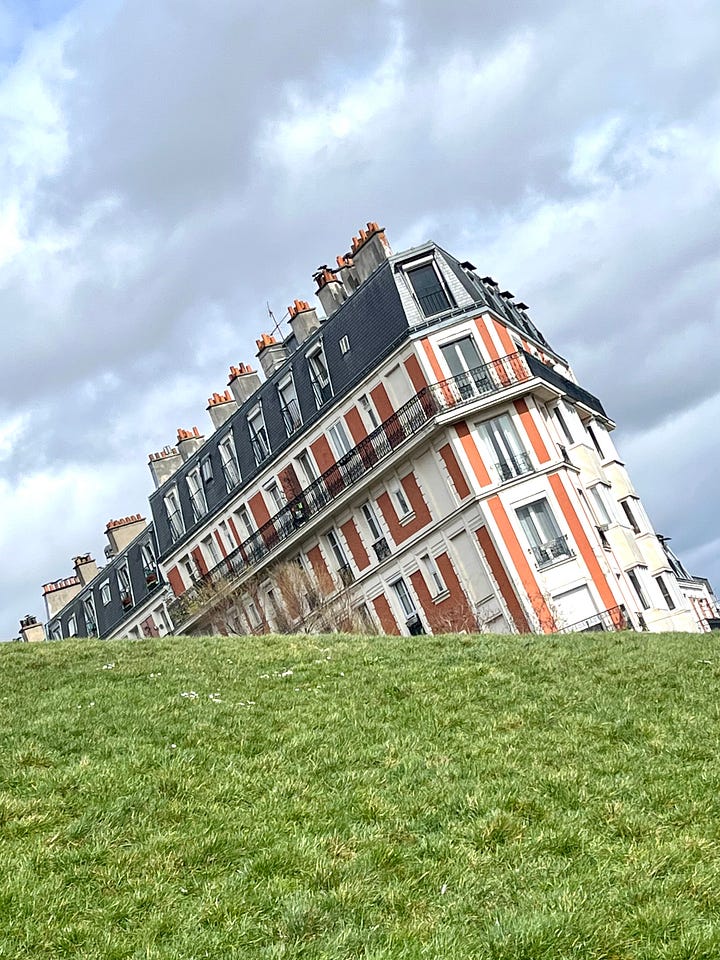
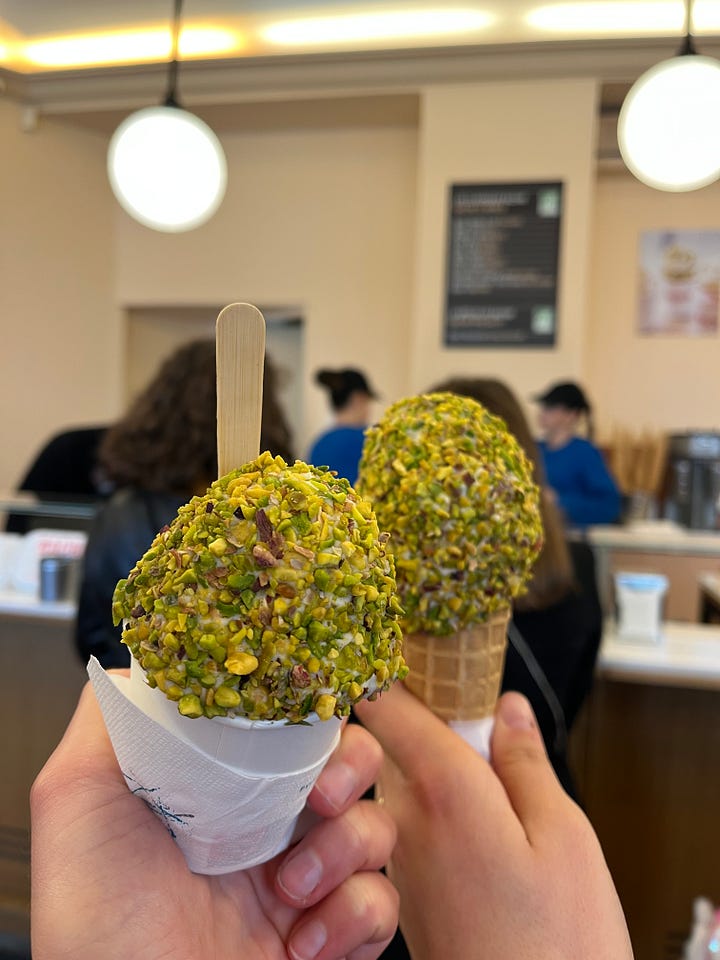
The most beautiful spot I ate in this week was Bouillon Racine, where we went with work colleagues to celebrate a number of good things happening recently in our team. The restaurant was founded in 1906 and takes you back in time to pure Belle Époque Paris with its whirling, swinging Art Nouveau motifs, wrought iron chairs, mirrored walls, and celadon wood and tiles. Bouillons were originally worker canteens, known for their huge spaces and quick service allowing for reasonable prices, though these days the Bouillon Racine is definitely a more elegant place for a special occasion.
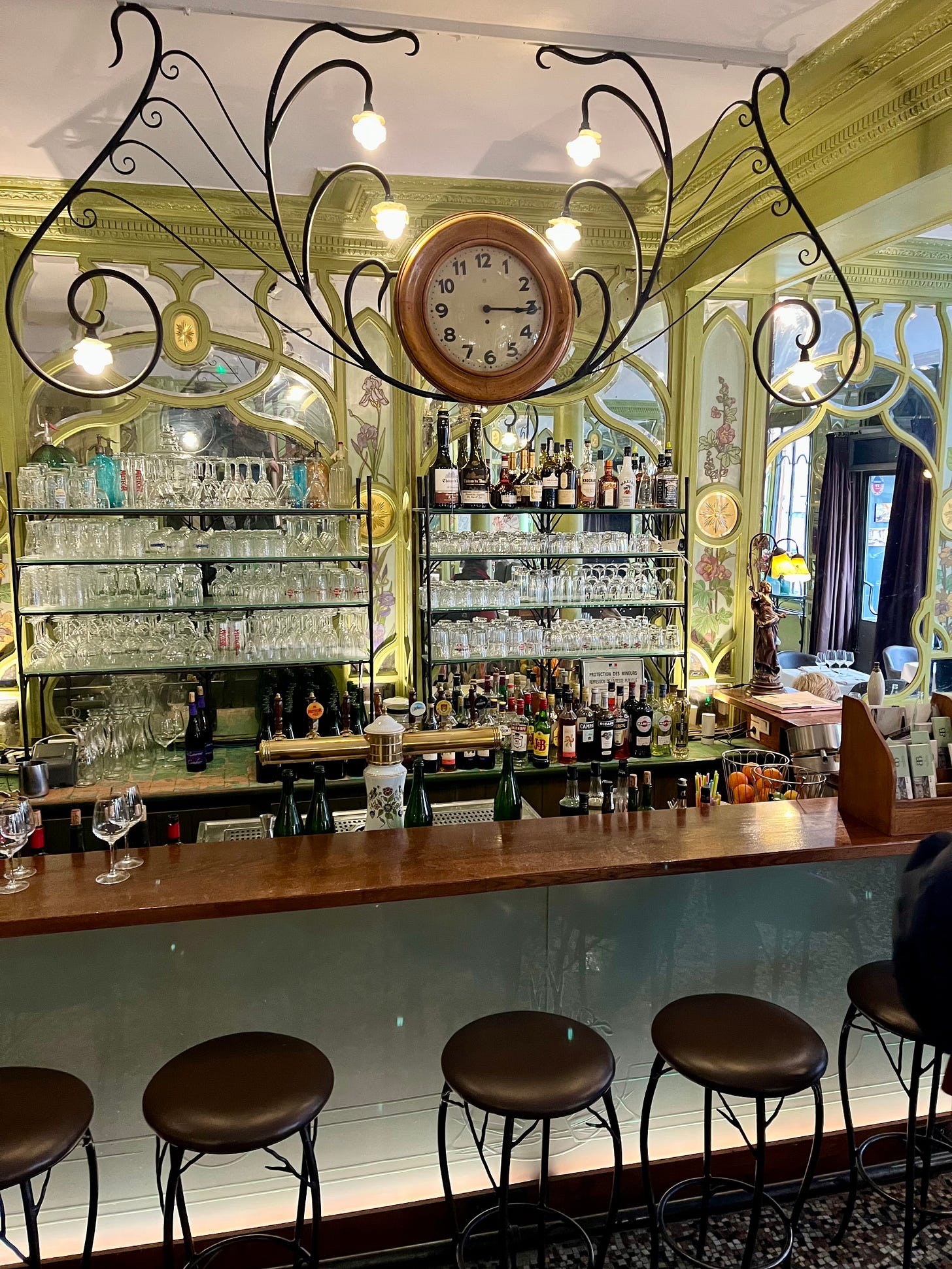
To end, I’ll share a fun, Paris-related article I read this week about an art historian who put forward the idea that the way van Gogh painted his cypress trees in Starry Night, 1889 was a visual critique of the 1889 World Fair’s unveiling of the Eiffel Tower, which was often accompanied by fireworks and other light shows and pyrotechnics.
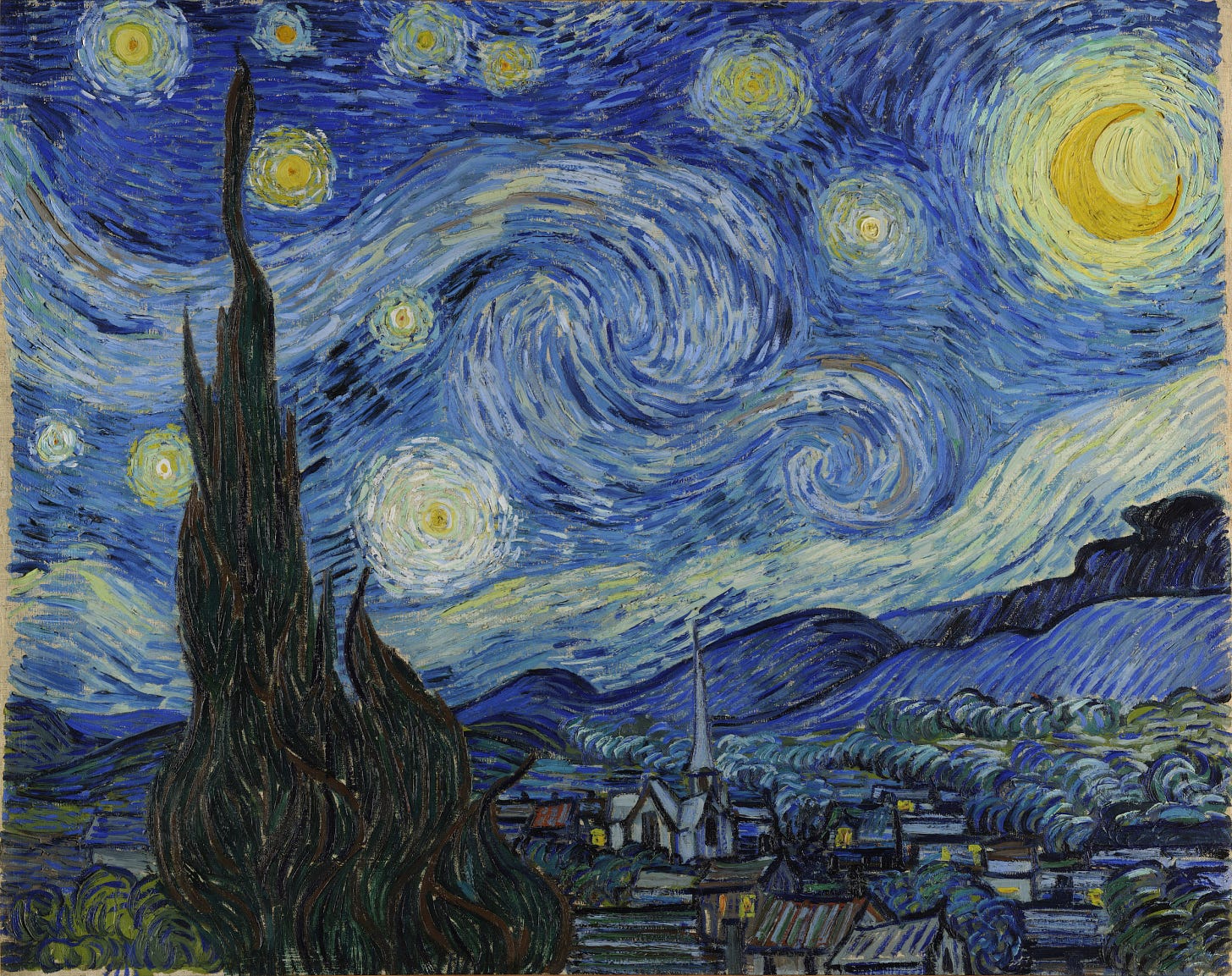
Here is the Iron Lady, for comparison, though sadly without any fireworks. What do you think? Was van Gogh painting the cypress in his Starry Night as a natural counterpart and critique of the Eiffel Tower and technological progress? In any case, these days, I think most people look at the Eiffel Tower in a much more positive light!
Wishing you a lovely week ahead,
Anna Lea





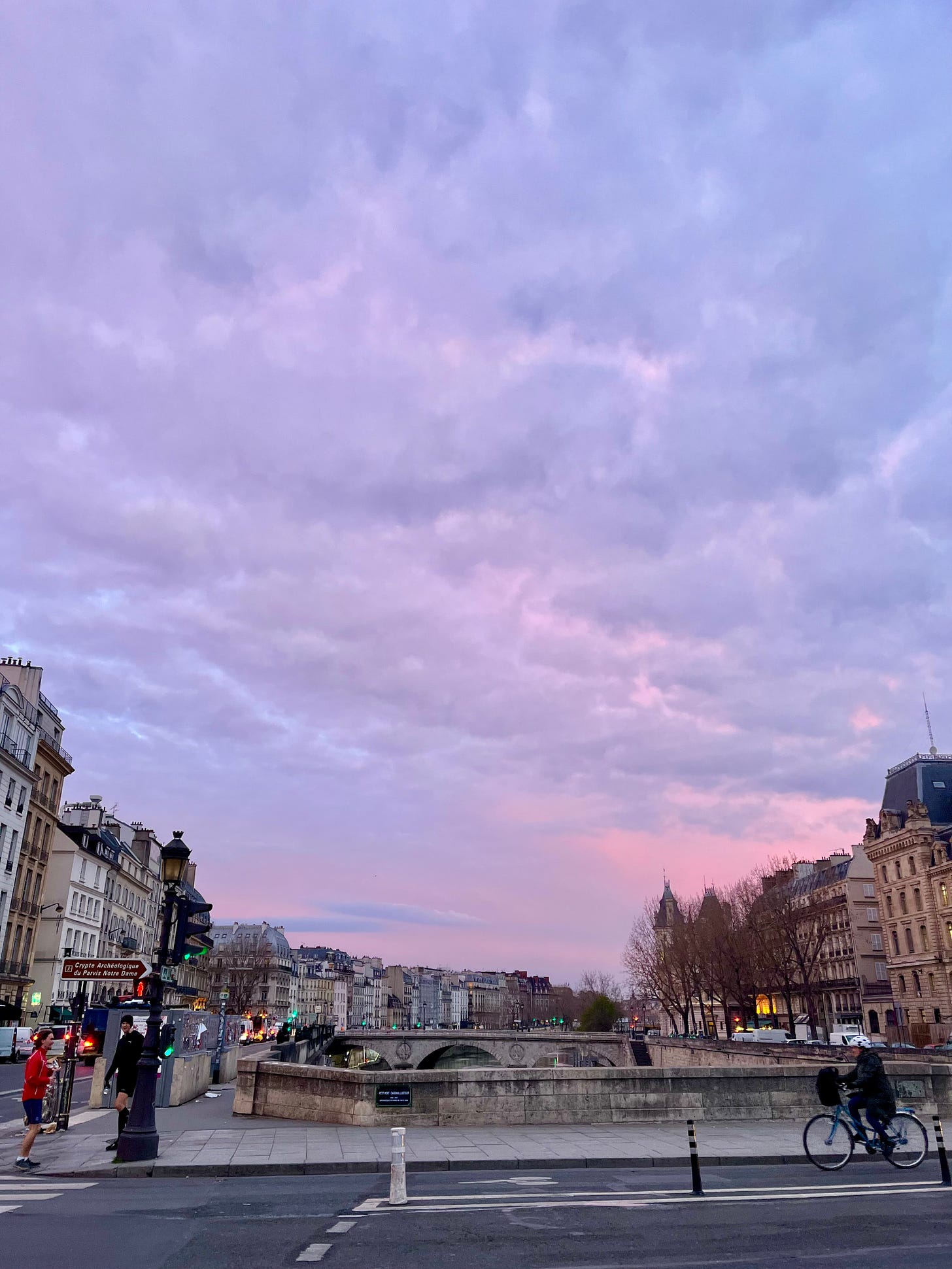

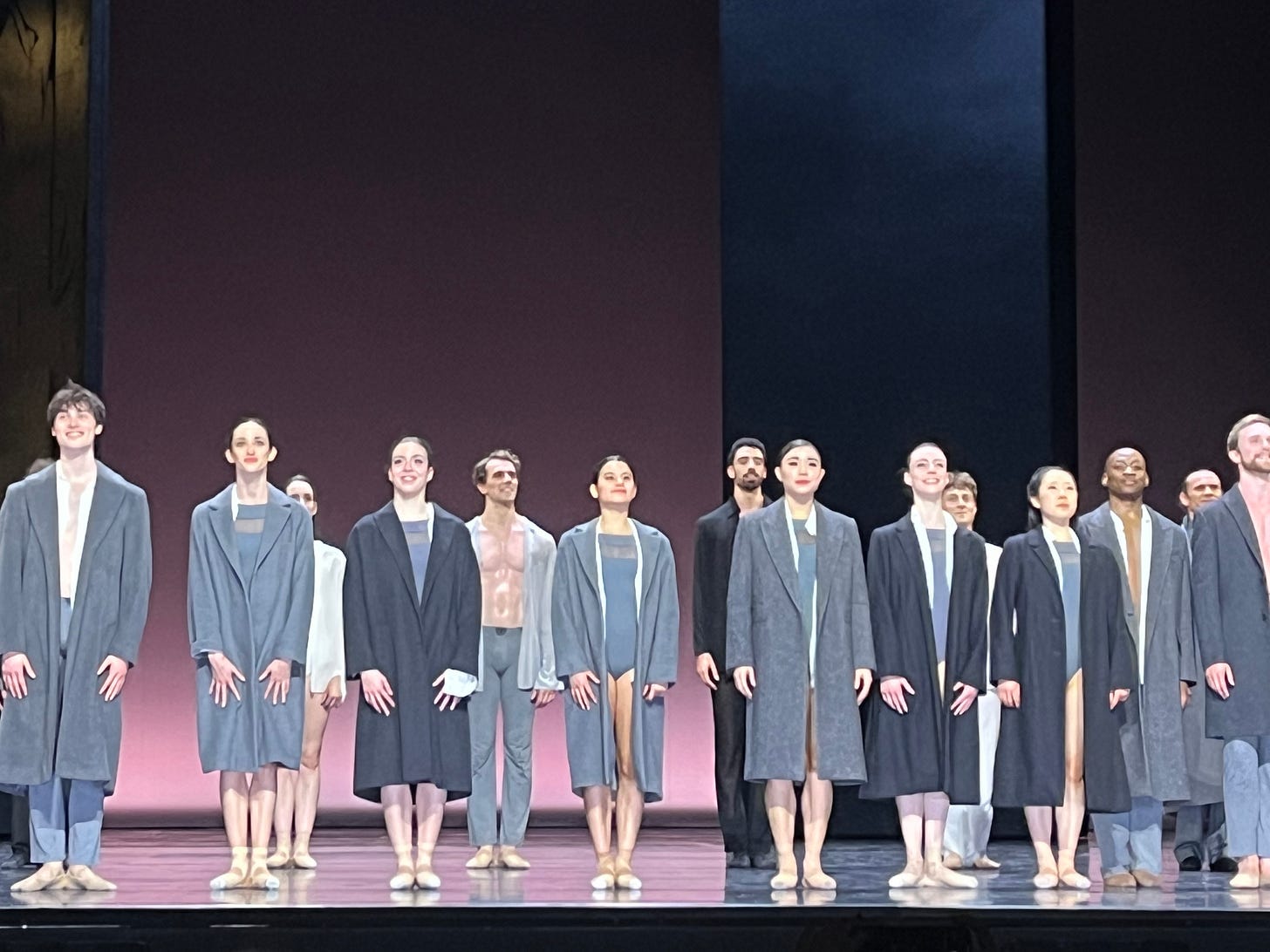
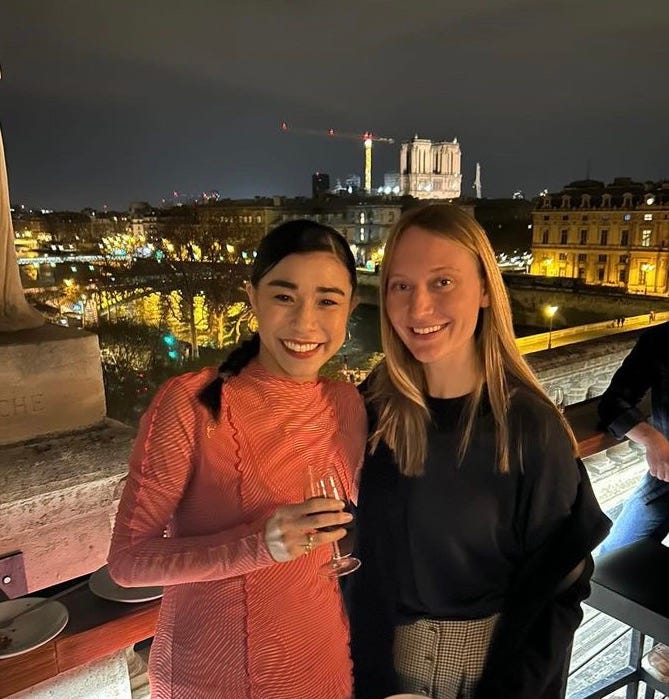

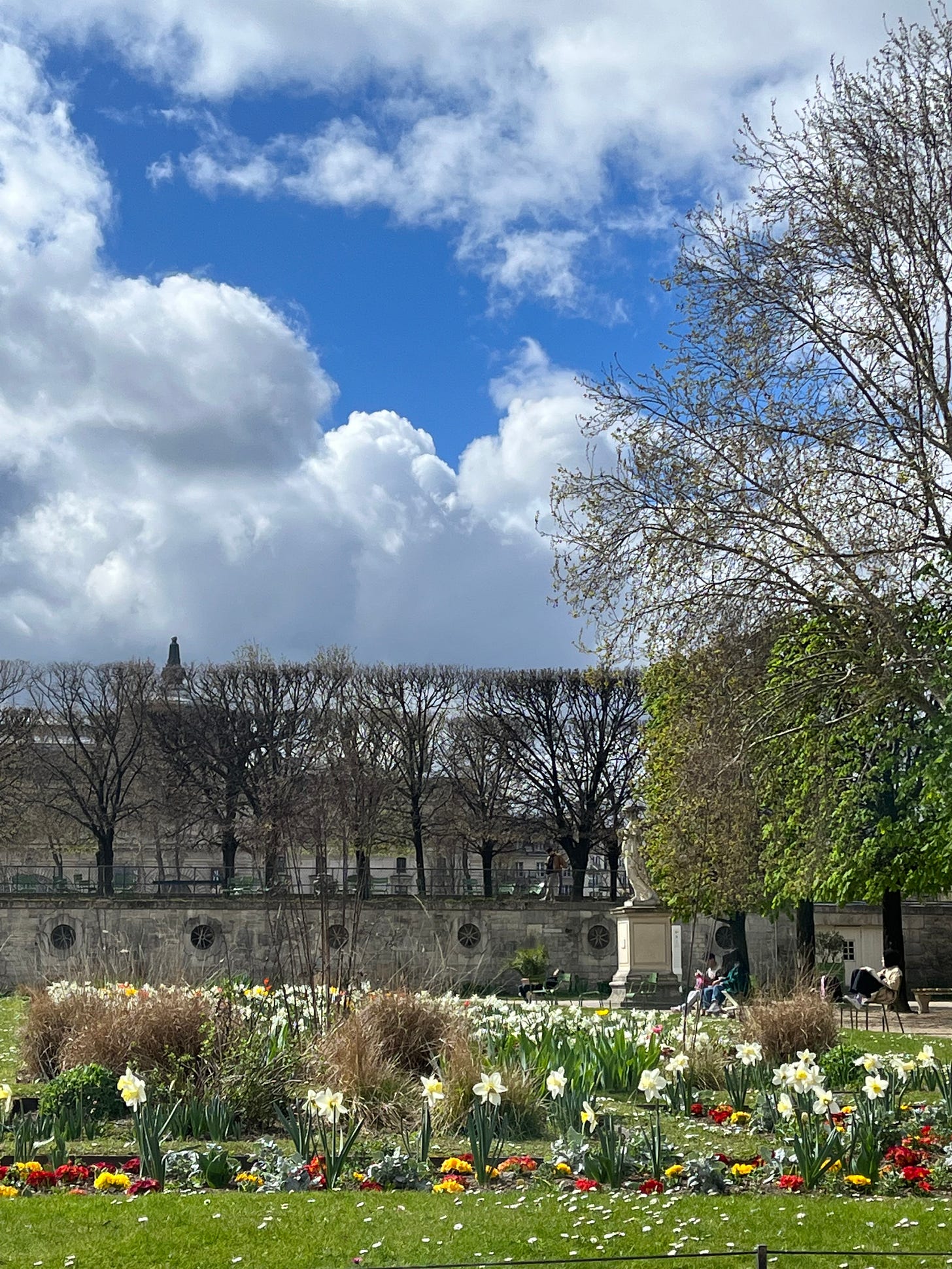
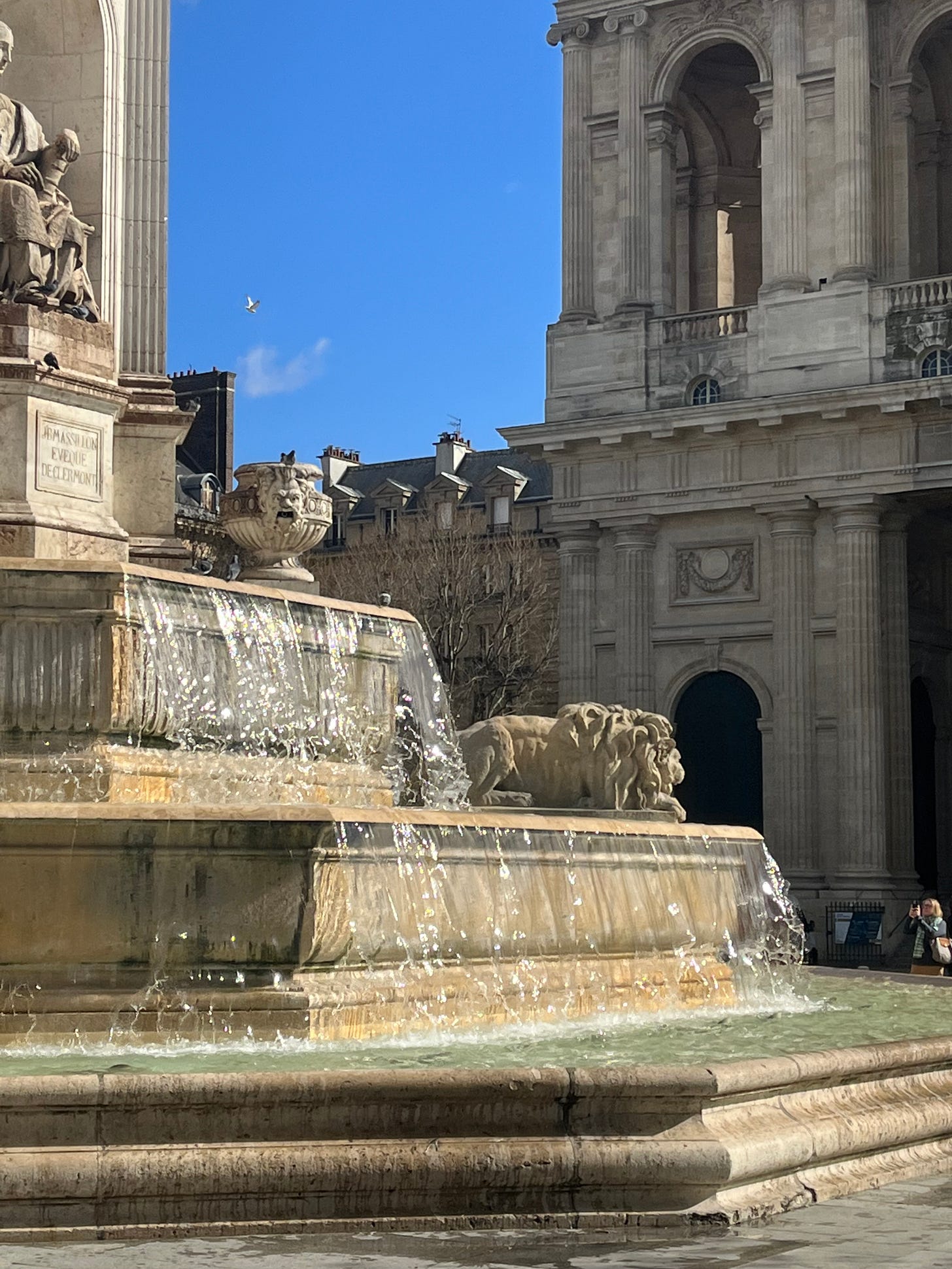

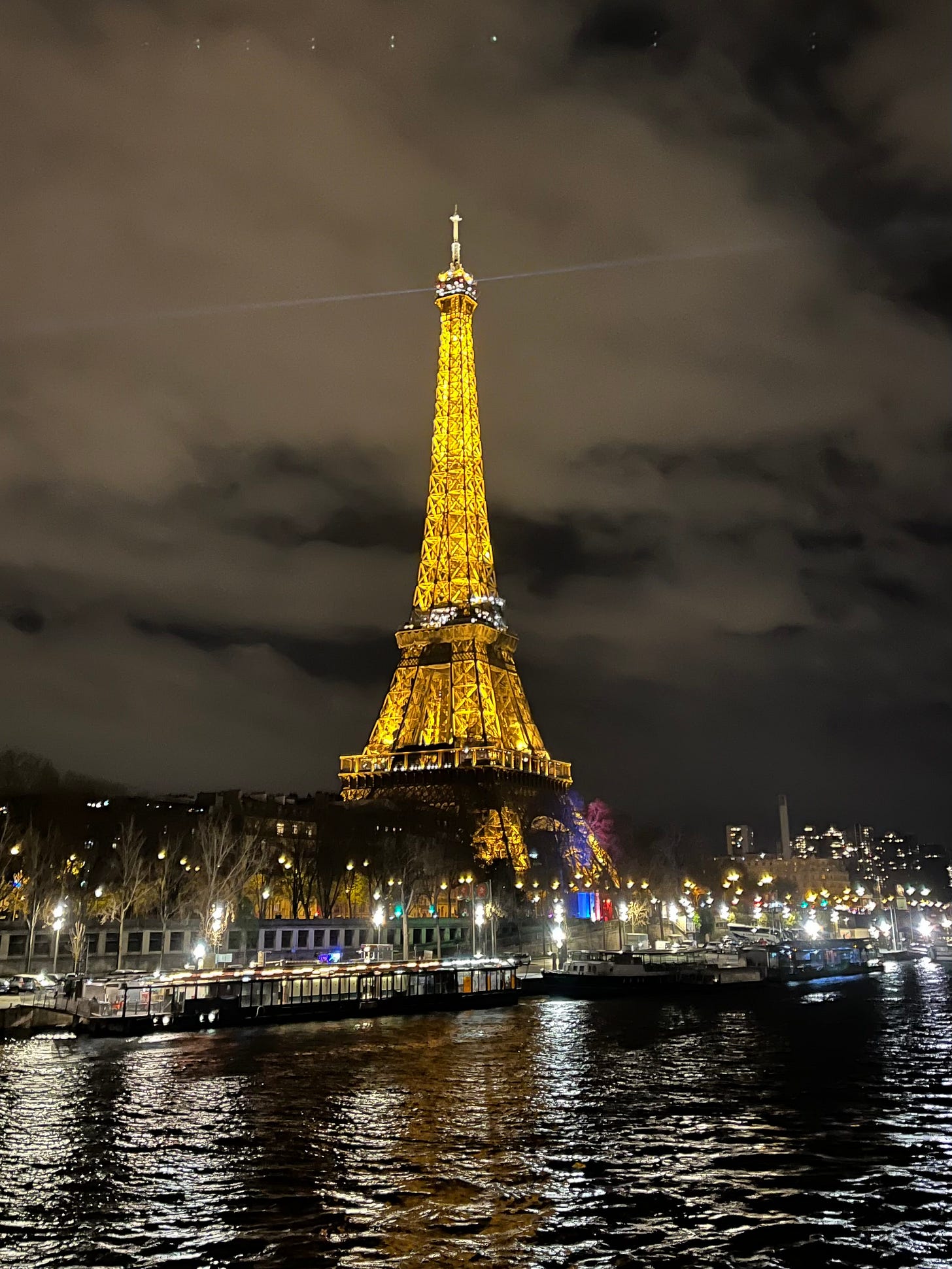
Theatre du Chatelet is just belle ! And so nice you included the impromptu - which I will promptly listen when I get the chance. How exciting to see your friend perform - with all the ballet stars there.
What a delight! I am sitting, this sunny, cold afternoon, in my little office, which is called Cozy Haven. Your descriptions and photos make me feel as if I am taking a walk in Paris. The flowers ... they look like a wild rose, but the stems don’t fit that. Tell me your favorite color, dear Anna-Lea. I want to send a small knitted gift for you.